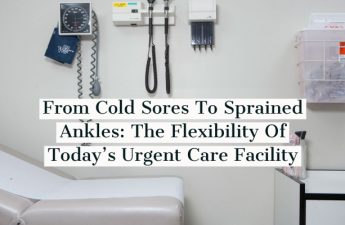

Broken bones. Lacerations. Influenza. Strep throat. Dizziness. Ankle sprains. Headaches. Migraines. High blood pressure. Diabetes. High cholesterol. Heart palpitations. Bronchitis. Anxiety. Depression. Eye twitching. Common colds. These are some of the ailments and illnesses treated at urgent care clinics. And there are many, many more.
Urgent care clinics are looked at by some as a bridge between the primary care physician and the emergency room. They have many of the features of both, which is what makes urgent care a growing market today, as more clinics are being opened and physicians are moving to urgent care medicine as a specialty.
Urgent care centers have many of the same characteristics from urgent care center to urgent care center. They are generally open early and close late; 85% of urgent care centers are open seven days per week. They are considered walk-in clinics, meaning patients don’t need to have an appointment to get diagnosis and treatment.
Many urgent care centers have the ability to treat more serious matters than seen at a primary care physician’s office. They have sophisticated imaging equipment that allows them to diagnosis and treat broken bones and lacerations, to ailments that are pressing in terms of needing to be treated immediately.
They generally have at least one physician on-staff at all times and often have a mid-level provider there as well. The average amount of rooms in an urgent care center is eight. Wait time is generally less than 30 minutes, with most patients being seen within 15. They are less costly than emergency rooms and more costly than primary care.
The reasons why they are the bridge between primary care physicians and the emergency room are numerous. When it comes to the primary care physician, it is oftentimes difficult to see one that day. This makes it difficult if the patient has a pressing matter, which broken bones and lacerations often are.
Primary care physicians tend to have a smaller copay than urgent care centers, making them more affordable for less pressing health needs. But a more pressing health need, an urgent care center is a better investment, as the health need could affect day to day life and work.
The reasons why the urgent care center is the bridge between primary care physicians and the emergency room comes with the emergency room. Before people were able to go to urgent care centers and had a pressing matter, they were either forced to wait for a primary care physician appointment or go to the emergency room.
The emergency room is costly, very expensive, and that put patients in a difficult situation with a difficult choice to make. However, over time, more and more people found themselves going to emergency rooms even when the conditions were not serious enough to warrant emergency treatment. They could have been treated in outpatient settings.
The emergency room has several issues associated with it. They are expensive, as mentioned above, with bills running into the hundreds and sometimes thousands of dollars. They have long waiting times, sometimes as long as 45 minutes to 1 hour. They are often not necessary for health problems that are not life-threatening.
Urgent care centers, offer that bridge between emergency rooms and primary care physicians. Urgent care centers are less costly than emergency rooms and more costly than primary care physicians.
They are specialized in handling immediate need cases that are not life-threatening.
There are several illnesses that can be treated in an urgent care setting:
- Four out of five urgent care centers provide fracture care.
- The most common diagnosis in an urgent care center is an upper respiratory condition.
- The most common procedure in an urgent care center is wound repair.
- Ankle sprains are commonly treated. Reports estimate that 25,000 Americans suffer from an ankle sprain each day.
- Dizziness is also a commonly treated condition. It is the second most common complaint heard in doctor’s offices, and will occur in 70% of the nation’s population sometime in their lifetime.
A walk in health clinic will often be staffed by local doctors. A walk in health clinic is also a medical clinic and can give medical help from a list of doctors. You can find doctors in a walk in health clinic and walk in health clinics will also give physical therapy in some cases.
